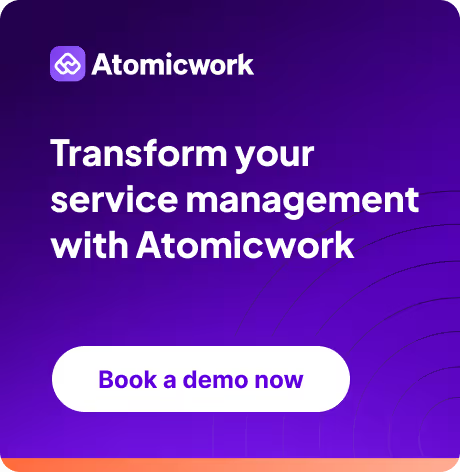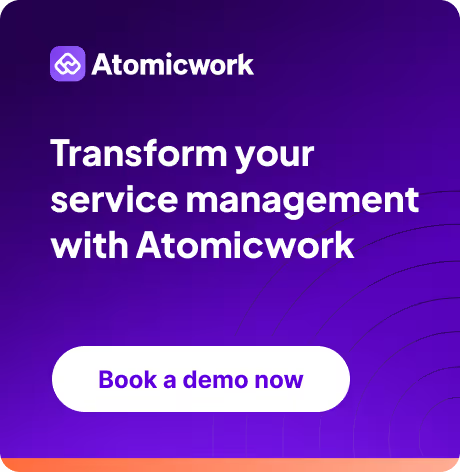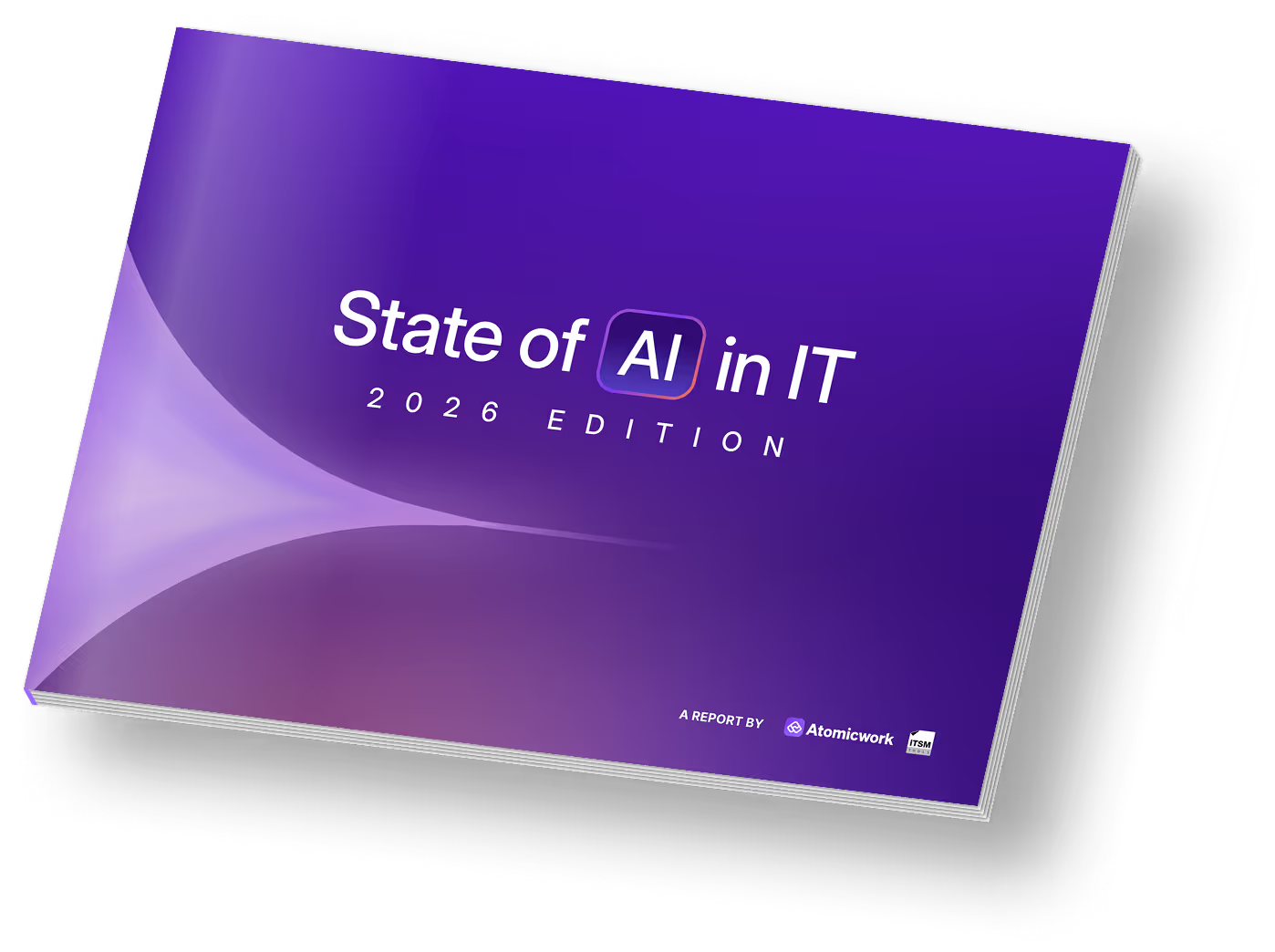5 Ideas to Automate Asset Management and Reclaim IT Productivity

Anyone in IT will tell you that managing an organization’s IT and non-IT assets is a lot of work.
Things don’t stop at just buying and tracking devices - there’s a lot more at stake, from ensuring devices are installed with appropriate software, replaced whenever they should be and retrieved on offboarding.
This is why it’s important to automate managing assets as much as possible here so that your IT team can move on to doing more productive things.
Here are some ideas that help :)
1. Automate with zero-touch asset enrolment and configuration
If your team is still unboxing laptops and setting up MDM products like Kandji, Intune or Jamf on each device manually, it’s time to automate this activity altogether and free up your team.

For Windows devices that you want to enrol into Intune, there’s a guide that you can follow to automatically enrol devices where a Microsoft Entra corporate sign-in happens. All you need to do is tweak some knobs in Intune as an administrator.
If automated enrolment doesn’t work for Intune for certain devices, you can even try emailing employees a deeplink which they can click on to get their computers added.
For Apple devices, you can register for Apple Business Manager as a business or as a university. Once that’s done, you can read through Kandji’s, Jamf or any other guidelines to setup zero-touch configuration and installation of the most commonly used apps on your employee’s devices.
With Atomicwork, you can go one step further. Your employees can place requests for specific apps through Microsoft Teams and Slack after their fresh setup. Once their requests are approved, you can have those apps pushed out remotely to their computers.
2. Automate notifications for expiring warranties and service requests for asset replacements
We’ve been working with a bunch of businesses who have historically tracked their assets in a SharePoint list of sorts. This works great, but many times there’s incorrect or inadequate data that helps them make clearer decisions about repairing or replacing assets in the future. They often tend to capture the model number, the screen size, RAM and HDD size, but several other pieces of information - like warranty date, etc. are missed out.
As a result, the IT team is completely unaware when an asset’s warranty expires. When things are tracked in just a spreadsheet, it’s also much more difficult to automate It’s important to have an asset management solution that can track devices that have expiring warranties and notify your team.
If you want to keep things lightweight, you can configure some workflows on any asset management solution that notifies your administrators or specific agents whenever warranties expire in a month or so.
We would also recommend taking things a step further, along these lines:
Sample workflow for asset warranty expirations:
- If a device’s warranty expires in a month (or in a period decided by you),
- Notify the employee and their manager that they will soon get a replacement and that the IT team has been notified
- Create an automated service request and assign it to one of your IT team members
Sample workflow for asset disposal during replacement:
- If a device is marked as 'retired',
- Send a confirmation to the employee
- Get their consent to wipe the device
- Execute a wipe action on the device remotely through MDM

These are ideas based on observations we’ve made with how our customers run their asset disposal processes, but make sure to tweak them for your needs.
3. Automate maintenance inspections with recurring checklists
Doing regular maintenance of your assets helps with:
- Identifying potential degradation in quality
- Fewer productivity losses that usually happen because of unforeseen disruptions
- Better forecasting of assets that you might need to purchase for the future
- Reduction in potential data losses
and so much more.
For assets that require regular maintenance checks, it’s important to have a checklist of items your team needs to review and ensure that your team is notified when maintenance is due. With a comprehensive asset management solution, you can automate creating recurring maintenance tickets that contain a list of tasks for your team to check on.
It must be possible for you to create multiple checklists based on the type of asset that needs to be reviewed. For physical inspections in different locations, you should also be able to route these checklists to team members based on their responsibilities.
The solution should also make it easy for you to go back and see audit the history of maintenance inspections that were done on a specific asset, and export them out so that you can submit them to external auditors whenever required.
With Atomicwork, you can not just automate creating tickets but also notify your IT team on the channel they most spend their time on—Microsoft Teams or Slack.
4. Drive continuous compliance with automatic notifications
With thousands of employees, it becomes all the more important to automate compliance checks on devices your employees own. An MDM solution that allows you to manage digital devices like laptops, desktops, tablets and phones should regularly notify your IT team when assets become non-compliant.
Even if ten devices become non-compliant every week because some settings were tweaked when they shouldn’t have been, your agents will spend several hours helping employees get their devices back to being compliant.
By going the extra mile and ensuring that employees are notified about steps they can take to resolve this situation, you’ll save even more time for your IT team.
If your MDM solution doesn’t notify employees, you can use Atomicwork to set up a workflow that sends over notifications on Microsoft Teams, Slack or email with guidance on how they can make their devices compliant.
5. Wipe devices automatically when offboarding and make it easy to return assets
You definitely don’t want your employee devices lying around with access to company data. It also gets messier over time to have devices that are no longer in use listed in your asset directory, patch management and other systems.
Sample asset disposal workflow for employee offboarding:
We would recommend having a specific status in your asset management system for marking devices of employees who are about to be offboarded.
If an asset is set to 'Offboard' or 'Disposed' status by an IT person, you can have an automated workflow that
- Logs the user out from the device
- Wipes the device
- Removes the device from your MDM, patch management and other tools
- Emails the manager that the employee’s device has been wiped

Things aren’t done until your employee ships the laptop back to your office - but this is high effort for employees. You can work with several logistics partners who can ship a box out for your employees to return their devices. Alternatively, you can automate sending instructions that guide your employees to take their device to FedEx or UPS for packing.
As you can see, configuring simple workflows for routine asset management tasks significantly eases your IT team’s workload.
If you need more automation ideas like these for ITSM processes or require assistance in implementing them, feel free to reach out to us.
You may also like...


.png)































